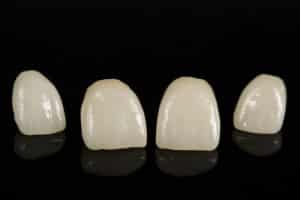 Dental issues and tooth loss may be common, but your teeth were meant to last a lifetime. Still, years of use in the midst of poor oral hygiene can threaten your smile’s longevity. Dental trauma stemming from accidental impact can also bring your teeth to an early demise if the damage is severe enough. Typically, however, your tooth can be saved, even if it is too weak to support itself alone.
Dental issues and tooth loss may be common, but your teeth were meant to last a lifetime. Still, years of use in the midst of poor oral hygiene can threaten your smile’s longevity. Dental trauma stemming from accidental impact can also bring your teeth to an early demise if the damage is severe enough. Typically, however, your tooth can be saved, even if it is too weak to support itself alone.
The purpose of dental crowns is to preserve healthy tooth structure, so when a tooth is damaged but doesn’t need a full crown, your dentist can design and place a partial crown – also known as a ¾ crown, or an inlay/onlay.
The Purpose of Dental Crowns
Although restorative dental technology is impressive these days, doctors agree that retaining as much of your natural tooth as possible should always be a top priority. With that in mind, your tooth’s damage can range from mild to critical, and treating your tooth depends on this severity. For instance, if minor tooth decay threatens your tooth, a simple dental filling may be able to save your smile. If decay has affected enough of your tooth that removing the infection will weaken it, then your dentist may advise placing a dental crown over the tooth to protect it.
Sometimes, however, the damage to your tooth may be too great for a dental filling, but not enough to justify a dental crown, in which case you may require a dental inlay or onlay, also known as partial crowns.
What is a Partial Crown?
Partial crowns serve the same purpose as full dental crowns, though on a smaller scale. Crafted from gold, porcelain, or composite resin (the same material used for white fillings and dental bonding), inlays and onlays are the same restoration, although they differ in the surfaces that they cover. Both are crafted from a mold of your tooth and used to cover its chewing surface; however, an inlay only covers the area between the cusps of your tooth.
For slightly more extensive damage, an onlay extends over one or more of your tooth’s cusps. After your final partial crown is ready and your dentist ensures that it fits correctly, he will bond the restoration to your tooth then polish it for a natural-looking finish.








